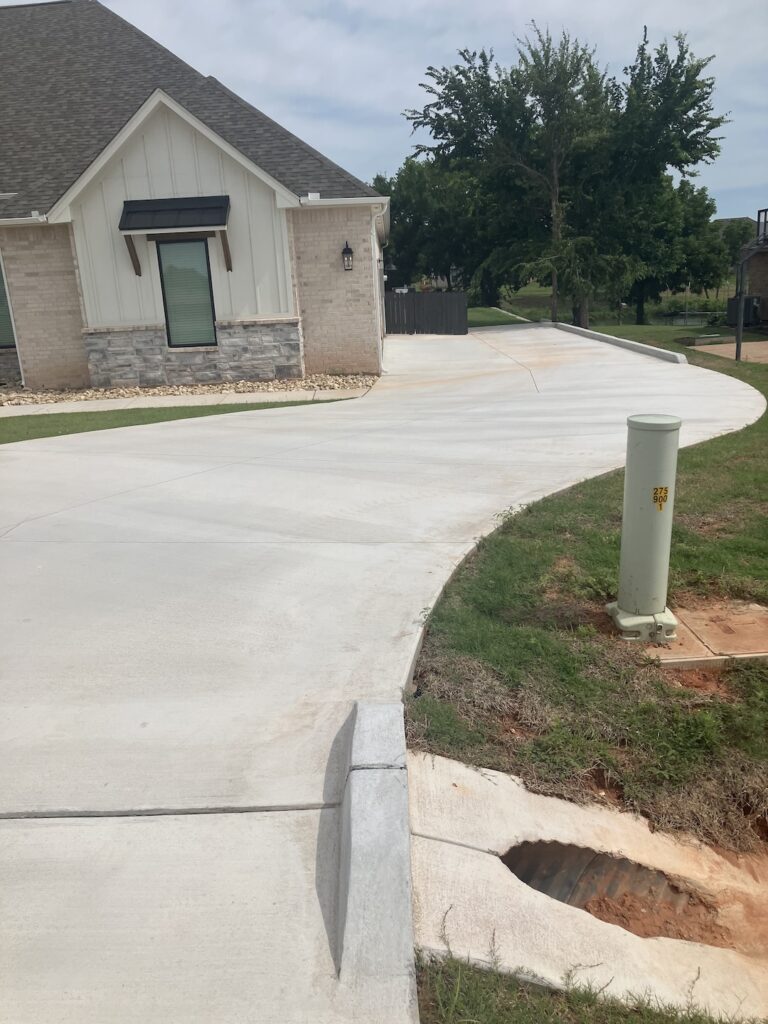
Signs of Concrete Damage You Should Never Ignore
Concrete is known for its strength, but even the toughest material has its limits. Over time, weather, soil movement, and wear and tear can cause deterioration that threatens the integrity of your structure. At Innovative Concrete Solutions, we specialize in large-scale concrete pours for home foundations and other structural elements—so we know exactly what to watch for. This guide will walk you through the key signs of concrete damage you should never ignore, and what they could mean for your property.
Cracks: Not All Are Created Equal
Cracks are the most visible and common sign of concrete damage. But not every crack spells disaster. Hairline surface cracks are often harmless, especially if they appear soon after curing. However, wider or deeper cracks—especially those that grow over time—can point to structural stress or shifting soil beneath the slab.
Here’s what to watch for:
- Vertical cracks in walls may be signs of settling or shifting
- Horizontal cracks can indicate pressure from surrounding soil or water buildup
- Diagonal cracks near corners could mean foundational stress
- Cracks wider than 1/8 inch should always be evaluated by a pro
Cracks in foundations or slabs should never be brushed off. Early attention prevents small issues from becoming major repairs later.
Spalling: Flaking, Chipping, or Surface Peeling
Spalling occurs when the surface layer of concrete starts to peel or flake away. This often happens due to freeze-thaw cycles, poor finishing during the initial pour, or corrosion of embedded steel (rebar) that expands and breaks the surface from within.
Common indicators include:
- Rough, patchy areas on the surface
- Chipped edges along corners or joints
- Exposed rebar or steel mesh
- Shallow pits or holes developing over time
Left untreated, spalling can expose the inner concrete to moisture and accelerate further damage. At Innovative Concrete Solutions, we’ve seen how spalling can compromise even the thickest slabs if ignored too long.
Uneven Surfaces or Sinking Sections
If a section of your concrete slab appears to be sinking, lifting, or sloping unevenly, it could mean the soil beneath it is shifting or settling. This is especially serious for foundation slabs, where uneven support can lead to cracks, water intrusion, or even structural failure.
You might notice:
- Uneven floors inside the home
- Gaps between the floor and baseboards
- Driveways or sidewalks sloping toward one side
- Pooling water on what used to be level surfaces
These signs of concrete damage may not seem alarming at first, but they’re often symptoms of a much bigger issue—like poor site prep, inadequate compaction, or water erosion beneath the slab.
Discoloration and Staining
While color changes alone don’t always signal structural issues, they can reveal deeper problems. Dark spots or white streaks might be signs of moisture intrusion, rusting steel inside the slab, or mineral deposits left by evaporating water.
Pay close attention to:
- Rust-colored stains near joints or cracks
- White powdery residue (efflorescence)
- Discoloration spreading across foundation walls
If these symptoms appear in combination with cracking or spalling, it’s time to have the area inspected.
Moisture and Leaks
Concrete is porous, which means water can find its way in if the surface isn’t properly sealed or if drainage around your structure is poor. Signs of moisture-related damage can often be subtle at first but escalate quickly.
Watch for:
- Damp patches or water stains on basement floors
- Musty odors inside the structure
- Mold or mildew near foundation walls
- Water pooling near the base of exterior walls
Water is one of the biggest threats to long-term concrete performance. Once it penetrates the surface, it can weaken the material, corrode the steel inside, and lead to expansion during freeze-thaw cycles.
When to Call a Professional
Not every issue requires immediate action—but if you spot multiple warning signs, or if a single symptom continues to get worse, don’t wait. As experts in foundational concrete work, we know that early intervention is the best way to protect your investment.
If your structure is experiencing:
- Repeating cracks that reappear after patching
- Signs of concrete damage spreading across multiple areas
- Sinking or shifting slabs affecting doors, windows, or walls
- Moisture that’s persistent, despite drainage fixes
It’s time to call in the pros. At Innovative Concrete Solutions, we can assess the underlying cause and recommend solutions—from repair and reinforcement to full replacement if needed.
Prevention Starts with Quality Installation
The best way to avoid serious damage is to start with high-quality work from the beginning. A properly poured foundation slab—on well-prepared soil, with the right mix design and reinforcement—can last for decades without issue. That’s where we come in. Every project we take on is built for longevity, using techniques and materials proven to withstand the test of time.
We also educate our clients on post-installation care. From sealing surfaces to managing drainage, simple steps can extend the life of your concrete and help you avoid costly repairs later on.
Protect Your Foundation Before It Fails
Ignoring early warning signs can lead to much bigger headaches down the road—especially when it comes to foundational structures. By recognizing and addressing the signs of concrete damage early, you can save time, money, and avoid serious structural issues.
If you’re noticing any of the symptoms we’ve covered, don’t wait. Reach out to Innovative Concrete Solutions today for a professional assessment. We’ll help you identify the root of the problem and deliver solutions that stand strong for years to come. Contact us today!
